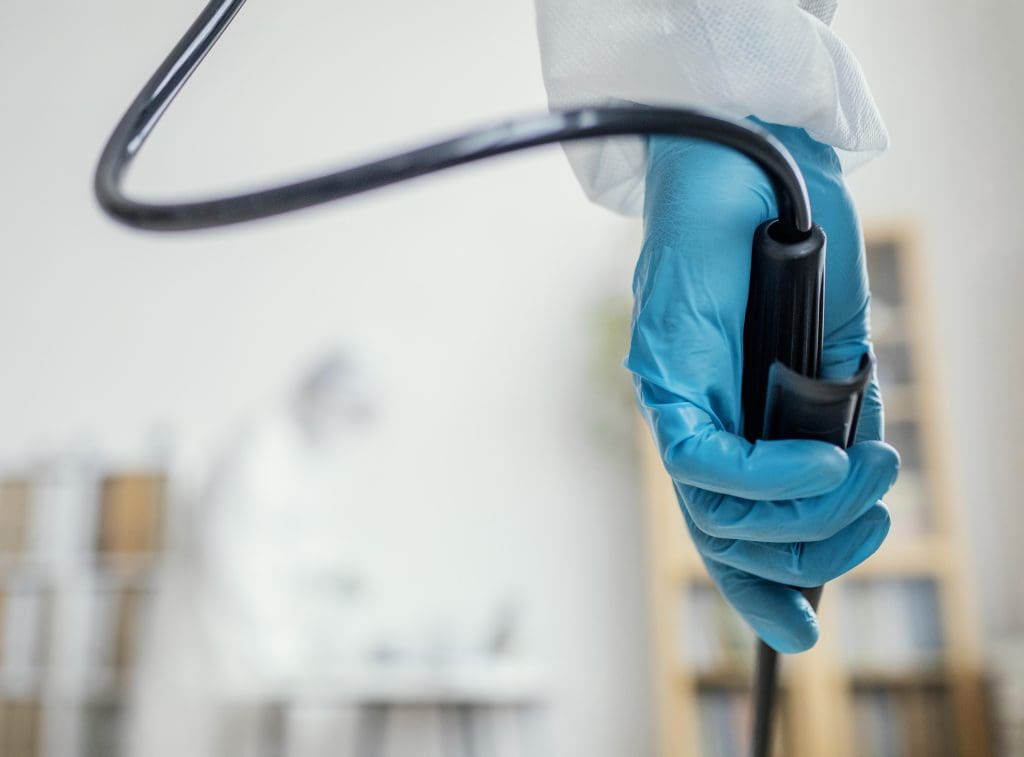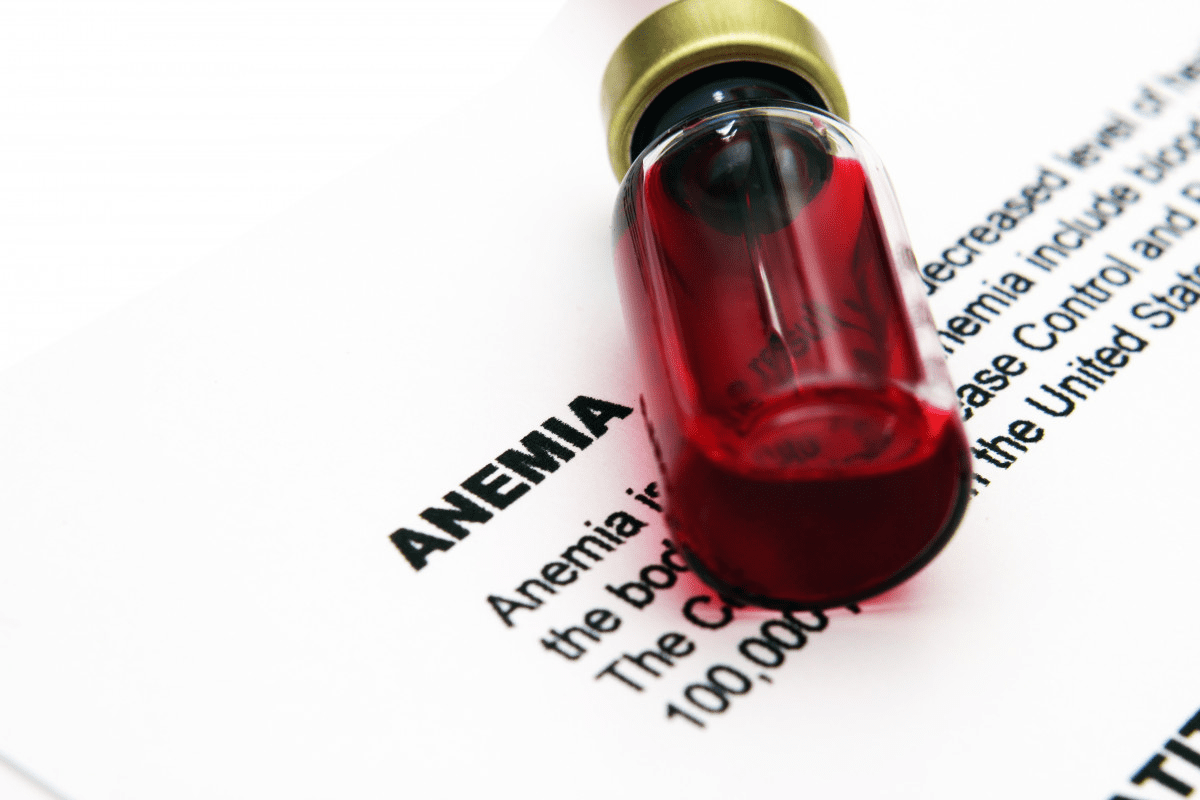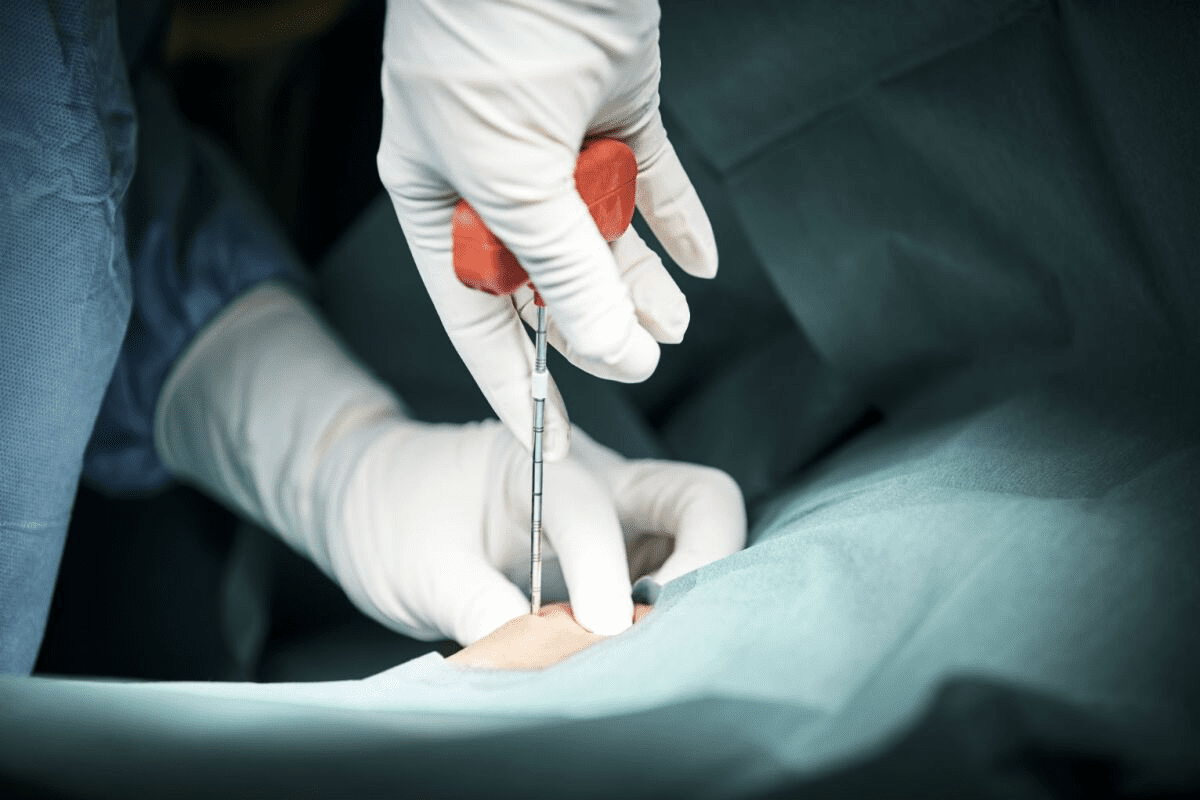Last Updated on November 27, 2025 by Bilal Hasdemir
Can You Get Colon Cancer 2 Years After a Colonoscopy? A startling reality is that even after a colonoscopy, some individuals can get colon cancer. This is known as interval colon cancer. It makes us question how well colonoscopy works as a screening tool.
Research shows that colonoscopy greatly lowers the risk of colon cancer. But, it’s not 100% effective. Sometimes, polyps are missed, leading to cancer between screenings.
It’s important to know the risks and limits of colonoscopy. This knowledge helps both patients and doctors make better choices. It’s about knowing when to screen again and how to follow up.

Key Takeaways
- Colonoscopy reduces but does not eliminate the risk of colon cancer.
- Interval colon cancer can occur due to missed polyps or other factors.
- Understanding the limitations of colonoscopy is key to managing risk.
- Regular screenings and follow-up care are critical for early detection.
- Awareness of personal risk factors can help tailor screening schedules.
Understanding Colon Cancer Basics
It’s important to know the basics of colon cancer. This includes its types, stages, and risk factors. Colon cancer, also known as colorectal cancer, is a serious disease. It affects millions of people worldwide, with a big impact in the US.
Types and Stages of Colorectal Cancer
There are different types of colon cancer. The most common is adenocarcinoma. It starts in the glandular cells of the colon and rectum. Other types include carcinoid tumors, gastrointestinal stromal tumors (GIST), and lymphomas.
The cancer’s stage shows how far it has spread. The TNM system is used to stage it. It looks at the tumor size, nearby lymph nodes, and if it has spread. Stages range from I to IV, with I being local and IV being distant.
Common Risk Factors in the US Population
Several factors increase the risk of colon cancer. Age is a big one, with most cases in people over 50. Family history also matters, with a higher risk if a first-degree relative has it.
Lifestyle choices also play a part. A diet rich in red and processed meats, not enough exercise, and smoking raise the risk.
| Risk Factor | Description | Impact on Risk |
| Age | Most cases diagnosed over 50 | Increased risk with age |
| Family History | Having a first-degree relative with colon cancer | Higher risk with closer relatives |
| Diet | High in red and processed meats | Increased risk |
| Physical Activity | Low physical activity | Increased risk |
| Smoking | Smoking tobacco | Increased risk |
The Role of Colonoscopy in Cancer Prevention
Colonoscopy is key in stopping and finding colon cancer early. It uses a flexible tube with a camera and light to look inside the colon and rectum. This helps find polyps, cancer, and other issues.
Colonoscopy works by finding and taking out polyps before they turn into cancer. Research shows it can cut colon cancer risk by up to 90% after the procedure (1).
How Colonoscopy Detects and Prevents Cancer
A gastroenterologist can spot polyps during a colonoscopy. These growths can turn into cancer. Taking them out stops cancer from starting.
This method finds cancer early when it’s easier to treat.
“Colonoscopy is a powerful tool in the prevention of colorectal cancer, enabling the detection and removal of adenomatous polyps before they become malignant.”
” A Gastroenterologist
Colonoscopy not only finds but also removes polyps. This step is key in lowering cancer risk.
Effectiveness and Limitations of the Procedure
Even though colonoscopy is very effective, it’s not perfect. Sometimes, polyps or cancer can be missed. This can happen if they are flat or in hard-to-see parts of the colon.
| Aspect | Description | Effectiveness |
| Detection of Polyps | Colonoscopy can identify polyps, which are possible precursors to cancer. | High |
| Removal of Polyps | Polypectomy during colonoscopy can stop polyps from turning into cancer. | Very High |
| Early Detection of Cancer | Colonoscopy can spot cancer early, which helps in better treatment results. | High |
It’s important to know what colonoscopy can’t do. The skill of the doctor, how well you prepare, and the technology used all play a part in how well it works.
In summary, colonoscopy is a key tool in fighting colon cancer. It’s not perfect, but its benefits in lowering cancer risk are clear.
Colon Cancer After Colonoscopy: Understanding the Phenomenon
Colon cancer after a colonoscopy is a complex issue. It requires a deep understanding of its causes and effects. This problem, known as post-colonoscopy colorectal cancer (PCCRC), is a big concern in the medical field. It affects how we care for patients and how we screen for diseases.
Defining Post-Colonoscopy Colorectal Cancer
Post-colonoscopy colorectal cancer is when cancer is found after a colonoscopy didn’t catch it. This can happen for many reasons. It might be because a cancer was missed during the colonoscopy or because a new cancer developed between screenings.
Key factors contributing to PCCRC include the quality of the colonoscopy, the skill of the endoscopist, and the patient’s risk factors for colorectal cancer. Knowing these factors is key to reducing the risk of PCCRC.
Incidence Rates in the United States
The rate of colon cancer after a colonoscopy varies. Studies show that some cases happen even after screenings. In the US, the rates of PCCRC show we need to stay alert and might need to change our screening rules.
| Study | Incidence Rate | Population |
| Study A | 2.5 per 1,000 | Average Risk |
| Study B | 4.2 per 1,000 | High Risk |
| Study C | 1.8 per 1,000 | Screened Population |
The data shows how important it is to have high-quality colonoscopy services. We also need to follow the recommended screening times to lower the risk of PCCRC.
Can Cancer Develop Within 2 Years of a Clear Colonoscopy?
Colon cancer can develop within 2 years after a clear colonoscopy, though it’s rare. This raises questions about the effectiveness of colonoscopy as a screening tool. Colonoscopy is seen as the best way to screen for colorectal cancer. Yet, there are cases where cancer appears soon after a screening shows no issues.
The Science Behind Rapid Cancer Development
Several factors can lead to colon cancer after a clear colonoscopy. These include missed lesions during the initial screening, incomplete polyp removal, and aggressive tumor biology. The science behind these factors is complex. It involves understanding colorectal cancer biology, the limits of current screening, and how fast tumors grow.
Research shows that some polyps, like flat or serrated adenomas, are often missed. The skill and experience of the endoscopist also play a big role in finding adenomas and cancers.
Case Studies and Statistical Evidence
Many case studies and analyses have looked into colon cancer after a clear colonoscopy. For example, a study in a top medical journal found a low but not zero rate of colorectal cancer within 2 years of a negative colonoscopy. It stressed the need for quality control in colonoscopy and ongoing surveillance in high-risk groups.
Statistics from countries like the United States show that while colonoscopy lowers colorectal cancer risk, it’s not a complete guarantee. Family history, genetic predispositions, and lifestyle also affect an individual’s risk.
By studying case studies and statistics, healthcare providers can better understand colon cancer after a clear colonoscopy. They can then improve screening guidelines to catch cancer early and prevent it.
Why Colon Cancer Might Be Missed During Screening
Colonoscopy is a key tool for finding colon cancer. Yet, it can sometimes miss the disease. Knowing why this happens is key to making screenings better.
Technical Limitations of Current Screening Methods
Colonoscopy is very good at finding cancer, but it’s not perfect. How well the bowel is cleaned before the test is very important. If the bowel isn’t clean, it’s hard to see inside.
Key technical limitations include:
- Inadequate bowel preparation
- Equipment quality and maintenance
- The angle and flexibility of the colonoscope
New technology, like high-definition imaging, helps find more cancers. But, the skill of the person doing the test also matters a lot.
Operator-Dependent Factors in Detection
The person doing the colonoscopy is very important. Their skill and experience can make a big difference. Some doctors find more cancers than others.
Factors influencing operator performance include:
- Level of training and experience
- Withdrawal time during the procedure
- Attention to detail during inspection
Challenging Anatomical Locations in the Colon
The shape of the colon can make it hard to find cancer. Some parts, like the flexures, are harder to see.
Anatomical challenges include:
- Tortuous or redundant colon
- Difficult-to-reach areas like the cecum
- Presence of diverticula
Knowing these challenges helps us find ways to see better in these tricky spots.
Missed Polyps: The Primary Culprit
Missed polyps are a big reason why colon cancer can develop after a colonoscopy seems to show nothing. This shows how hard it is to catch all polyps during a colon cancer screening.
Colonoscopy is the best way to prevent colon cancer, but it’s not perfect. The success of the procedure depends on the skill of the doctor and how well the bowel is prepared. Even with the best conditions, some polyps can be missed.
Types of Polyps Most Frequently Overlooked
Some polyps are harder to find than others. Flat or serrated adenomas are often missed during colonoscopies. These polyps don’t stick out much from the colon’s surface.
The table below shows the characteristics of polyps that are often missed and their risk for colon cancer.
| Polyp Type | Characteristics | Cancer Risk |
| Flat Adenomas | Flat shape, often not protruding | High |
| Serrated Adenomas | Serrated appearance, can be flat or sessile | Moderate to High |
| Sessile Polyps | Attached to the colon wall by a broad base | Moderate |
Factors Affecting Adenoma Detection Rates
Adenoma detection rates (ADRs) are key to measuring how good a colonoscopy is. Many things can affect ADRs, like how well the bowel is prepared, the doctor’s skill and experience, and how long the procedure takes.
To lower the risk of colon cancer after a colonoscopy, we need to improve ADRs. This means better training for doctors and using new technologies to find polyps.
The Growth Rate of Colon Cancer
Knowing how fast colon cancer grows is key for good screening and treatment. Colon cancer starts with the change of adenomas into carcinomas, a process called the adenoma-carcinoma sequence.
Adenoma-Carcinoma Sequence Timeline
The adenoma-carcinoma sequence is a known way colon cancer develops. It can take from 5 to 15 years, but it varies. Adenomas are benign polyps that can turn cancerous over time.
Key stages in the adenoma-carcinoma sequence:
- Formation of adenomas
- Accumulation of genetic mutations
- Progression to high-grade dysplasia
- Invasion into the surrounding tissue
Aggressive vs. Slow-Growing Cancer Types
Colon cancers grow at different rates. Aggressive colon cancers grow fast and spread quickly. On the other hand, slow-growing colon cancers grow slowly and can be caught earlier.
The difference between aggressive and slow-growing cancers affects how we screen and treat them. For example:
- Aggressive cancers need more frequent screening and quick action.
- Slow-growing cancers might need less frequent screening, depending on the person’s risk.
Understanding colon cancer’s growth rate and the adenoma-carcinoma sequence is vital. It helps create personalized screening and treatment plans. By knowing the differences between aggressive and slow-growing cancers, doctors can improve patient care.
Risk Factors for Developing Colon Cancer After a Negative Colonoscopy
Even with a clean colonoscopy, some people might face a higher risk of colon cancer. Knowing these risks is key for both patients and doctors. It helps in taking the right steps to prevent and follow up on health.
Genetic Predispositions and Family History
Genetics are a big deal when it comes to colon cancer. If you have a family history of colon cancer, you’re at a higher risk. Syndromes like Lynch syndrome and Familial Adenomatous Polyposis (FAP) also raise your risk. People with these conditions need to be watched more closely, even after a clean colonoscopy.
Lifestyle and Environmental Influences
Our lifestyle and environment also affect our risk of colon cancer. Eating too much red meat and not enough fiber can be bad. Smoking and drinking too much alcohol also increase your risk. Being active and not being overweight can help lower your risk.
Medical Conditions That Elevate Risk
Some medical conditions can up your risk of colon cancer, even after a clean colonoscopy. If you have inflammatory bowel disease (IBD), like Crohn’s or ulcerative colitis, you’re at higher risk. The longer and more severe your IBD, the higher your risk. Other conditions, like diabetes and certain infections, can also raise your risk.
Talking to your doctor about your health and family history is very important. They can help figure out the best screening and follow-up plan for you.
Recognizing Symptoms of Colon Cancer Post-Colonoscopy
Even after a clear colonoscopy, it’s vital to watch for colon cancer symptoms. Colon cancer can sometimes be found after a colonoscopy. Knowing the warning signs is key for quick medical help.
Early Warning Signs That Shouldn’t Be Ignored
Several symptoms may show colon cancer, even after a colonoscopy. These include:
- Changes in Bowel Habits: Persistent diarrhea or constipation that lasts for more than a few days.
- Blood in the Stool: Visible blood or black, tarry stools can be a sign of bleeding in the digestive tract.
- Abdominal Pain: Persistent or severe pain in the abdomen that doesn’t go away.
- Unexplained Weight Loss: Losing weight without a clear reason, such as changes in diet or exercise.
- Fatigue: Feeling extremely tired or weak, which can be a sign of anemia due to internal bleeding.
When to Contact Your Healthcare Provider
If you notice any of these symptoms, contact your healthcare provider right away. Finding colon cancer early can greatly improve treatment results. Your doctor might suggest more tests, like another colonoscopy or CT scans, to find out what’s causing your symptoms.
Prompt action is key. Don’t wait to call your healthcare provider if you notice unusual changes in your body. Quick action can greatly improve your chances of managing and treating colon cancer.
Current Surveillance Guidelines After Colonoscopy in the US
In the US, guidelines for checking up after a colonoscopy depend on age and risk level. These rules help make sure people get the right care based on their health and the colonoscopy results.
Standard Follow-up Protocols by Age Group
People with normal colonoscopy results usually wait longer for their next check-up. Here are the standard times:
- For those aged 50-75 with a normal colonoscopy, the next check-up is in 10 years.
- For those under 50 or over 75, the timing might change based on other health risks and overall health.
Remember, these are general rules. Your doctor might adjust the schedule based on your health and risk factors.
Modified Schedules for High-Risk Individuals
People at higher risk need to be checked more often. The closer schedules are for those with:
- A family history of colon cancer
- Personal history of colon cancer or polyps
- Genetic syndromes like Lynch syndrome
For those at high risk, the time between colonoscopies might be 3-5 years. This depends on their specific risks and past colonoscopy results.
Key Considerations:
- Having high-risk adenomas (like large or with high-grade dysplasia) might mean a shorter wait time.
- Those with a history of colon cancer might need more frequent checks as part of their care.
Following these guidelines is key for catching colon cancer early. Doctors and patients work together to find the best check-up schedule. This is based on the person’s risk factors and health.
Improving Colonoscopy Quality and Detection Accuracy
Advanced technologies and quality benchmarks are key to better colonoscopy results. New methods and tools are changing how we screen for colorectal cancer.
Advanced Technologies Enhancing Detection
Modern technologies in colonoscopy have boosted detection rates. Narrow-band imaging (NBI) and high-definition imaging help see the colon’s lining better. This makes it easier to spot small lesions that might be missed with regular colonoscopy.
Artificial intelligence (AI) is also a big leap forward. AI systems help doctors find polyps and adenomas more accurately and quickly. Research shows AI can raise adenoma detection rates, cutting down on missed lesions.
Quality Benchmarks for Colonoscopy Procedures
Setting quality benchmarks is vital for top-notch colonoscopy care. These standards include adenoma detection rate (ADR), cecal intubation rate, and withdrawal time. Keeping these standards high is key for effective cancer screening.
Following these benchmarks helps healthcare providers offer the best colonoscopy services. This leads to better patient results.
Treatment Options for Colon Cancer Following Colonoscopy
After a colonoscopy, the treatment for colon cancer depends on several factors. These include the cancer’s stage and its characteristics. It’s important for patients to understand these options to make informed decisions about their care.
Surgical Interventions and Approaches
Surgery is a key treatment for colon cancer, mainly for early-stage cases. Surgical resection involves removing the tumor and nearby lymph nodes. This aims to remove the cancer completely and prevent it from coming back.
“The surgical method can change based on the tumor’s location and the patient’s health,” says a colorectal surgeon. “Laparoscopic surgery, a minimally invasive technique, is becoming more common. It helps reduce recovery time and lowers the risk of complications.”
Chemotherapy, Radiation, and Targeted Therapies
For more advanced colon cancers or when the cancer has spread, chemotherapy and radiation therapy are often suggested. Chemotherapy uses drugs to kill cancer cells. Radiation therapy uses high-energy rays to target and destroy cancer cells.
Targeted therapies focus on specific molecules involved in cancer growth. “These therapies can be more effective and have fewer side effects than traditional chemotherapy,” notes, an oncologist.
Emerging Treatments and Clinical Trials in the US
New and emerging therapies are changing the treatment landscape for colon cancer. Immunotherapy, which uses the body’s immune system to fight cancer, is being tested in clinical trials. Other new treatments include precision medicine approaches tailored to the genetic characteristics of individual tumors.
Patients should talk to their healthcare providers about these options. They might also want to consider joining clinical trials to get access to innovative treatments.
“The future of colon cancer treatment lies in personalized medicine and targeted therapies. As research advances, we are seeing improved outcomes for patients,” said, a leading oncologist.
Survival Rates and Long-term Prognosis
Survival rates for colon cancer depend on many factors. These include the cancer’s stage, the patient’s health, and how well the treatment works. Knowing these details is key for both patients and doctors to make the best care plans.
Factors Influencing Survival Outcomes
Several important factors affect colon cancer survival rates. The cancer’s stage, the patient’s health, and the treatment’s success are all critical. Early detection greatly boosts survival chances. Patients caught early have a much better five-year survival rate than those diagnosed later.
The patient’s age, health, and any other medical conditions also matter. For example, patients with fewer health issues and better overall health usually do better.
Comparing Interval Cancers vs. Standard Detected Cancers
Interval cancers, found after a screening but before the next one, have different survival rates. Studies suggest interval cancers might be more aggressive. This could lead to lower survival rates.
| Cancer Type | 5-Year Survival Rate | Characteristics |
| Standard Detected Cancers | Higher (e.g., 90% for Stage I) | Often detected early, more likely to be treatable |
| Interval Cancers | Lower (varies by study) | May be more aggressive, diagnosed between screenings |
Knowing the differences between interval and standard detected cancers helps. It allows for better screening and treatment plans. This can improve survival rates for colon cancer patients.
Conclusion: Moving Forward After Diagnosis
Getting a colon cancer diagnosis after a colonoscopy can be scary. But knowing what to do next can help. Colonoscopies are great for finding and stopping colon cancer early. Yet, they’re not perfect.
Things like missed polyps and how fast cancer grows can affect your risk. Your own health risks also play a big part.
After finding out you have colon cancer, it’s time to take action. You need to know the cancer’s stage and type. Then, talk to your doctor about treatment options.
Being informed and involved is key to dealing with colon cancer. This way, you can face the challenges head-on. It’s also important to keep up with follow-up tests to catch cancer early.
FAQ
What is the risk of colon cancer after a colonoscopy?
The risk of colon cancer after a colonoscopy is low but not zero. The quality of the colonoscopy and the skill of the operator matter. So do your individual risk factors.
Can colon cancer develop within 2 years of a clear colonoscopy?
Yes, colon cancer can develop within 2 years after a clear colonoscopy, but it’s rare. The science behind this is complex. It involves the growth rate of cancer and the chance of missing polyps during the first screening.
What are the symptoms of colon cancer after a colonoscopy?
Symptoms include changes in bowel habits, blood in the stool, and abdominal pain. Unexplained weight loss is also a sign. It’s important to notice these signs early and see a doctor quickly.
How often should I have a follow-up colonoscopy?
How often you need a follow-up colonoscopy depends on your risk factors, age, and the first colonoscopy’s findings. The frequency varies by age and risk level. High-risk people might need more frequent screenings.
What are the treatment options for colon cancer following a colonoscopy?
Treatments include surgery, chemotherapy, radiation, and targeted therapies. The right treatment depends on the cancer’s stage and type, and your health.
Can improving colonoscopy quality reduce the risk of colon cancer?
Yes, better colonoscopy quality can lower the risk of colon cancer. This is through using advanced technologies and quality standards. It helps find more polyps and reduces the chance of missing them.
What are the risk factors for developing colon cancer after a negative colonoscopy?
Risk factors include genetic predispositions, family history, lifestyle, and certain medical conditions. Knowing these helps assess your risk and guide follow-up care.
How fast does colon cancer grow?
Colon cancer growth rates vary. Some grow fast, others slow. Understanding this helps in early detection and treatment.
What are the survival rates for colon cancer detected after a colonoscopy?
Survival rates depend on the cancer’s stage and your health. Comparing different types of colon cancer can give insights into survival chances.
Are there any emerging treatments for colon cancer?
Yes, new treatments and clinical trials offer hope for colon cancer patients. These include targeted and immunotherapies being studied in research.






